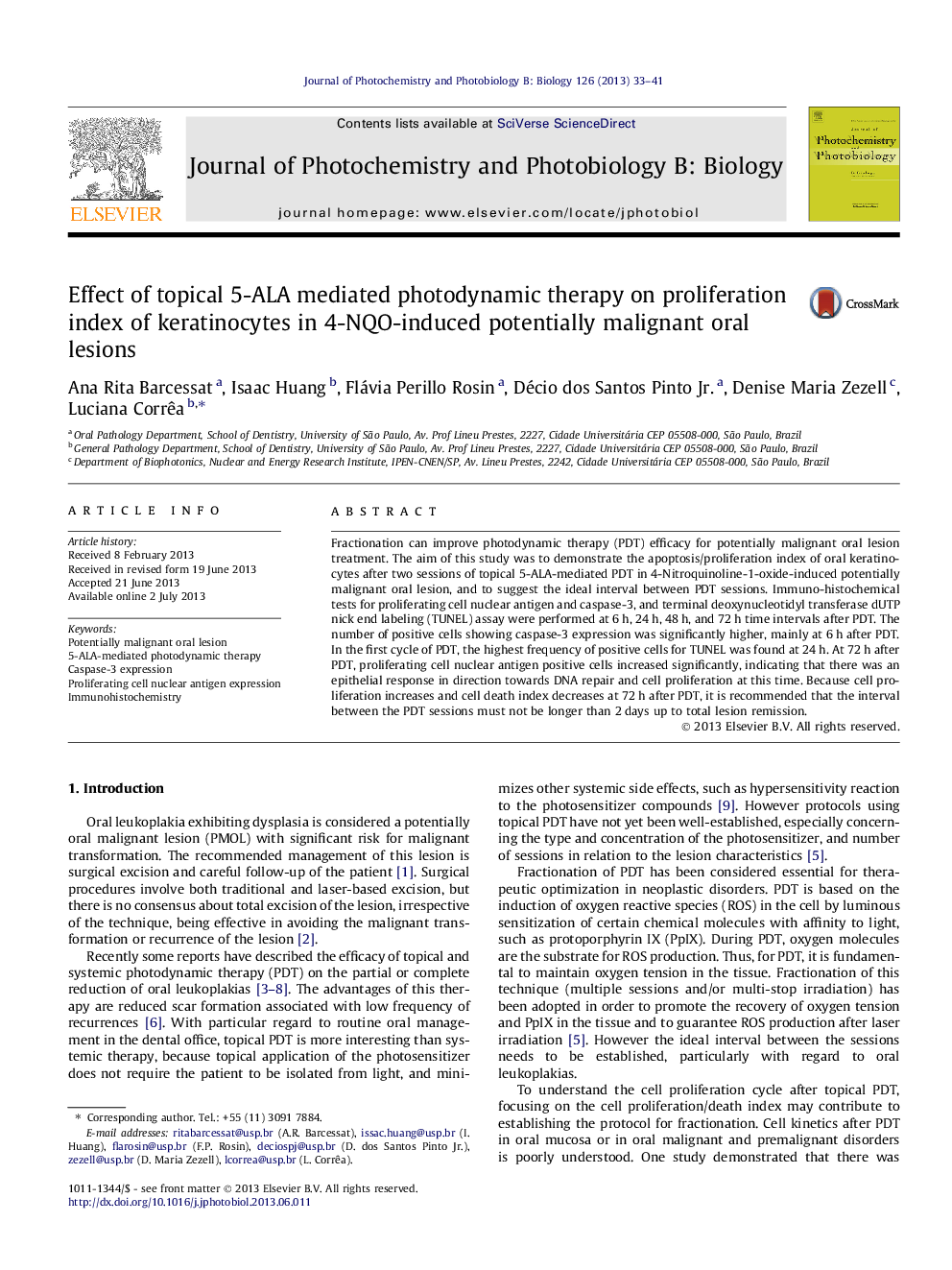| Article ID | Journal | Published Year | Pages | File Type |
|---|---|---|---|---|
| 30492 | Journal of Photochemistry and Photobiology B: Biology | 2013 | 9 Pages |
•We treated induced oral leukoplakia with 5-ALA mediated photodynamic therapy.•We analyzed the expression of cell proliferation and cell death after PDT.•We observed that cell death index increases at 6 h and decreases after 72 h.•We concluded that the interval of PDT session must be no longer than 3 days.
Fractionation can improve photodynamic therapy (PDT) efficacy for potentially malignant oral lesion treatment. The aim of this study was to demonstrate the apoptosis/proliferation index of oral keratinocytes after two sessions of topical 5-ALA-mediated PDT in 4-Nitroquinoline-1-oxide-induced potentially malignant oral lesion, and to suggest the ideal interval between PDT sessions. Immuno-histochemical tests for proliferating cell nuclear antigen and caspase-3, and terminal deoxynucleotidyl transferase dUTP nick end labeling (TUNEL) assay were performed at 6 h, 24 h, 48 h, and 72 h time intervals after PDT. The number of positive cells showing caspase-3 expression was significantly higher, mainly at 6 h after PDT. In the first cycle of PDT, the highest frequency of positive cells for TUNEL was found at 24 h. At 72 h after PDT, proliferating cell nuclear antigen positive cells increased significantly, indicating that there was an epithelial response in direction towards DNA repair and cell proliferation at this time. Because cell proliferation increases and cell death index decreases at 72 h after PDT, it is recommended that the interval between the PDT sessions must not be longer than 2 days up to total lesion remission.
